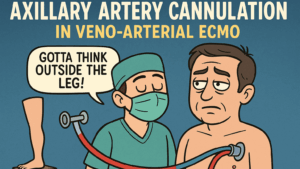In cardiac surgeries requiring prolonged aortic cross-clamping, effective myocardial protection is crucial to minimize ischemic injury. St. Marianna University School of Medicine introduced a revised myocardial protection protocol in April 2021, aiming to enhance outcomes for such high-risk procedures. This study retrospectively compares patient outcomes before and after the protocol’s implementation.
Study Design and Patient Groups:
The study included 36 patients who underwent cardiac surgery via median sternotomy with aortic cross-clamp times exceeding 4 hours between 2018 and 2024. Patients were divided into two groups:
- Group 1 (Pre-Revision): 17 patients treated between 2018 and March 2021.
- Group 2 (Post-Revision): 19 patients treated from April 2021 to 2024.
Patients undergoing coronary artery bypass grafting or with circulatory arrest were excluded to maintain consistency.
Protocol Modifications:
The revised protocol introduced several key changes to the administration of blood cardioplegia:
- Reduced Administration Interval: The interval between cardioplegia doses was decreased from 30 to 25 minutes.
- Limited Extension: Only a single 5-minute extension to the interval was allowed.
- Alternating Delivery Routes: The protocol mandated alternating between antegrade and retrograde administration.
- Capped Consecutive Retrograde Doses: No more than two consecutive retrograde doses were permitted.
These adjustments aimed to optimize myocardial perfusion, particularly for the right ventricle, and ensure consistent protection throughout the surgery.
Results:
- Creatine Kinase Levels: Group 2 exhibited significantly lower postoperative creatine kinase levels (770 ng/mL) compared to Group 1 (1357 ng/mL), indicating reduced myocardial injury (P = 0.018).
- Hospital Stay: Patients in Group 2 had shorter hospital stays (28.4 days) than those in Group 1 (40.4 days), suggesting faster recovery (P = 0.017).
- Right-Ventricular Dysfunction: Fewer cases were reported in Group 2 (15.8%) compared to Group 1 (29.4%), though the difference was not statistically significant.
- In-Hospital Mortality: No deaths occurred in either group.
- Cross-Clamp Duration: Both groups had cross-clamp times exceeding the traditionally recommended maximum of 240 minutes (Group 1: 296 min; Group 2: 278 min), yet outcomes remained favorable.
Clinical Implications:
The study demonstrates that procedural modifications in cardioplegia administration—without altering the solution itself—can lead to improved myocardial protection and patient outcomes in prolonged cardiac surgeries. The revised protocol’s simplicity and effectiveness make it a viable option for broader adoption in similar surgical settings.
Limitations:
This single-center, retrospective study with a small sample size may limit the generalizability of the findings. Additionally, potential confounding effects from the COVID-19 pandemic on hospital stay durations during 2020–2023 are acknowledged.
Conclusion:
Adjusting the timing and method of blood cardioplegia administration, as demonstrated in this study, offers a straightforward and effective approach to enhance myocardial protection during prolonged aortic cross-clamping in cardiac surgery. The revised protocol led to significant improvements in key postoperative outcomes, suggesting its potential for wider clinical application.







